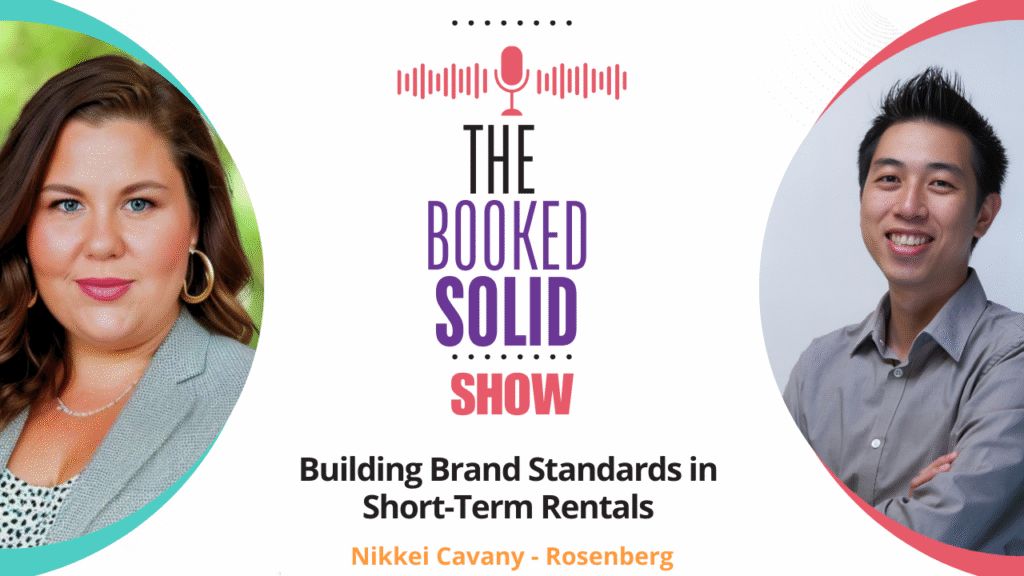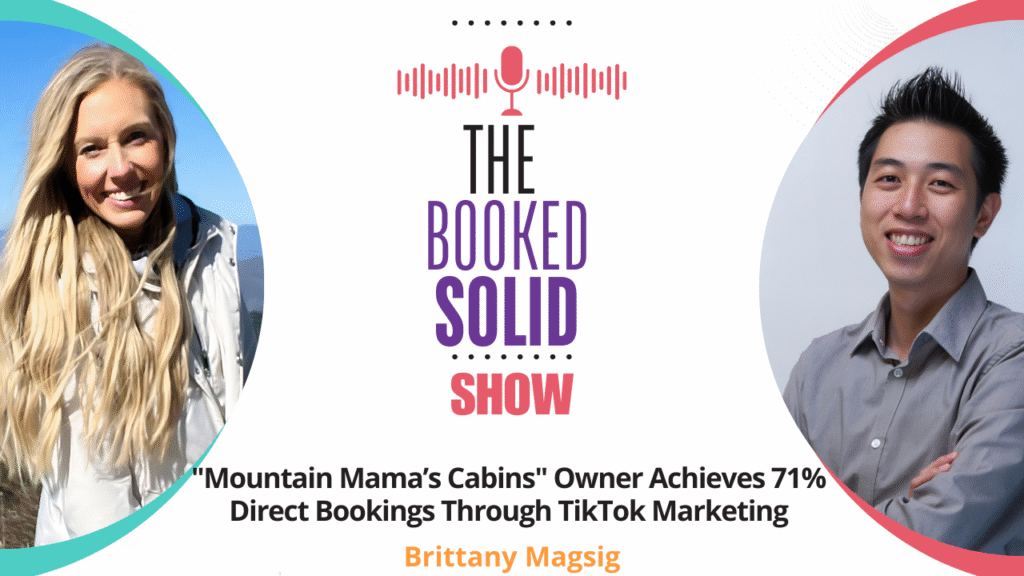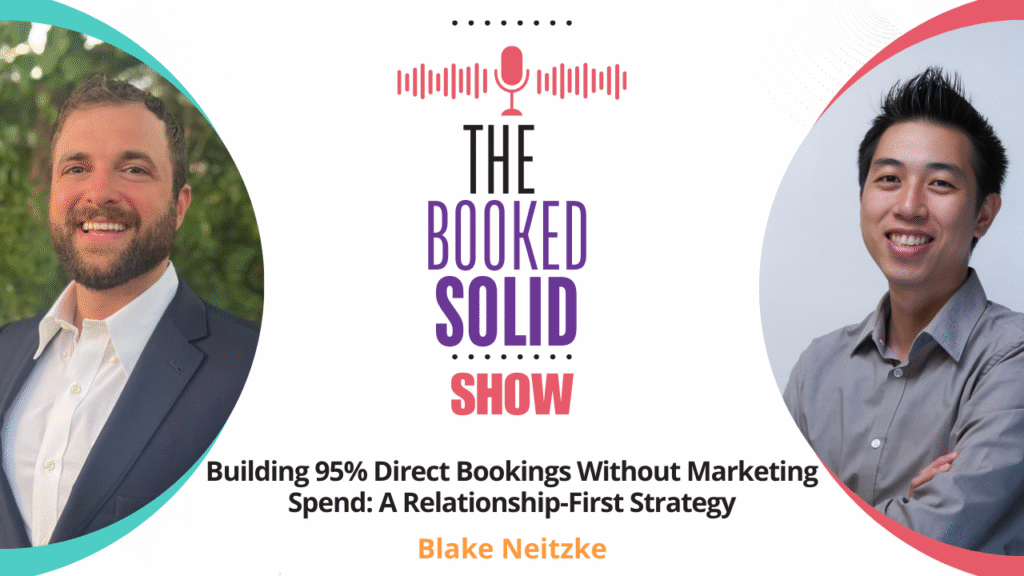“There’s so much incremental bookings our industry could be getting if we just did a better job of managing rates throughout the season. More than anything, drive additional revenue over and above new amenities, new photos—it’s just do a better job of how you’re setting rates.” – Jamie Lane The short-term rental landscape has undergone dramatic shifts since 2020, creating both challenges and opportunities for independent hosts building direct booking businesses. From mobile bookings now representing 58% of Airbnb’s traffic to supply growth slowing to just 4% in 2025, understanding these data-driven trends isn’t just helpful—it’s essential for staying competitive. In this comprehensive discussion, we explore the critical insights every host needs to navigate today’s market, optimize their direct booking strategy, and establish sustainable revenue streams that are not entirely dependent on OTA algorithms. Summary and Highlights 🎯 Meet Jamie Lane: The Data-Driven Voice of Short-Term Rentals Jamie Lane serves as Chief Economist and SVP of Analytics at AirDNA, the industry’s leading short-term rental data intelligence platform tracking millions of properties worldwide. With over 14 years of experience in hospitality economics, Jamie brings a unique perspective as both an industry analyst and an active STR host in North Georgia’s mountain markets. His groundbreaking contributions earned him the Innovator/Disruptor award at the 2023 Shortyz Awards, while his market insights regularly appear in the Wall Street Journal, the New York Times, and Bloomberg. Beyond the data, Jamie co-hosts AirDNA’s STR Data Lab podcast and has been documenting his own hosting journey on YouTube, applying market intelligence to real-world property management decisions. Before joining AirDNA, Jamie spent a decade at CBRE, leading research and forecasting teams. He holds a Bachelor of Science in Economics from the University of Georgia and a Master of Science in Business Economics from Georgia State University. 📊 The Great Channel Shift: From Direct Dominance to OTA Growth The pandemic has fundamentally altered guest booking behavior, creating lasting changes that continue to shape the industry. Prior to 2020, many large property managers generated the majority of their bookings through direct channels. Today, OTAs command increasingly larger market share—but the story has an interesting twist. While larger property managers have seen their direct booking percentages decline, smaller hosts are actually trending in the opposite direction. The proliferation of user-friendly PMS platforms, such as Guesty and Hostaway, among others, has democratized direct booking technology that was previously accessible only to enterprise-level operators. “If you think back in 2015, like I was hosting and for me to get a direct booking website, like Guesty didn’t exist, Hostway didn’t exist. Like all these large PMS companies that we sort of take advantage of now just didn’t exist,” Jamie explains. This technology gap meant most individual hosts had no practical path to direct bookings beyond building everything from scratch. 📱 Mobile-First Booking Revolution Perhaps the most striking trend shaping guest behavior is the explosive growth of mobile bookings. Airbnb disclosed that 58% of their Q1 bookings came through mobile devices—up from 54% the previous year. This isn’t just a slight preference shift; it represents a fundamental change in how travelers discover and book accommodations. For hosts building direct booking websites, this trend requires a mobile-first design approach. Sites that feel clunky on mobile devices or fail to optimize for smaller screens risk losing nearly half their potential bookings to competitors with superior mobile experiences. The demographic driving this shift skews younger, with travelers in their twenties and thirties showing a strong preference for completing entire booking flows on mobile devices. These guests don’t just browse on mobile—they research, compare, and complete transactions entirely through their phones. 🏔️ Supply Growth Slowdown: Good News for Existing Hosts After years of explosive inventory growth reaching 20-25% annually during peak pandemic periods, supply growth has dramatically decelerated to approximately 4% in 2025. This slowdown isn’t due to decreased demand—RevPAR remains at all-time highs—but rather reflects challenging investment economics. Home values have increased roughly 50% over three years, while interest rates jumped from 3% to peaks around 8.5%. Meanwhile, STR revenue has grown approximately 30% over the same period. The math simply doesn’t work for many potential investors who previously found attractive cash-on-cash returns in the 20-40% range. “Most investors now are like, the only reason why they’re able to make it make sense is because of the tax benefit. If you’re just underwriting the cash flows and what the investment’s gonna take, unless you have that tax benefit, it doesn’t make sense,” Jamie notes. For existing hosts, this supply constraint creates favorable operating conditions. Less new competition means better occupancy rates and pricing power—assuming hosts stay competitive with their data-driven STR strategies. 💰 The Revenue Management Gap: Leaving Money on the Table Despite the widespread availability of dynamic pricing tools, only about 25% of hosts actively use revenue management platforms. This creates enormous opportunities for data-driven hosts willing to optimize their pricing strategies beyond simple seasonal adjustments. Markets like Gatlinburg and Pigeon Forge, where 85% of listings use revenue management solutions, demonstrate both the competitive advantage and necessity of sophisticated pricing. Hosts in these markets who don’t actively monitor competitor rates and adjust pricing can quickly lose bookings to more agile operators. “There are so many incremental bookings our industry could be getting if we just did a better job of managing rates throughout the season,” Jamie emphasizes. The impact exceeds that of new amenities, professional photography, or other property improvements. 🌍 Economic Headwinds and Guest Behavior Changes Several macroeconomic factors are creating booking pattern shifts that hosts need to understand: Compressed Booking Windows: Guests are waiting longer to commit to travel plans, with booking windows in mountain markets declining approximately 8% year-over-year. This reflects economic uncertainty and guests’ reluctance to commit to future spending. International Travel Trends: American travelers are increasingly choosing overseas destinations, with demand for Japan up 30% year-over-year. Meanwhile, Asian travelers to the US remain 50% below pre-pandemic levels, particularly impacting West Coast markets. Income Tier Differences: The booking slowdown primarily affects budget-tier










